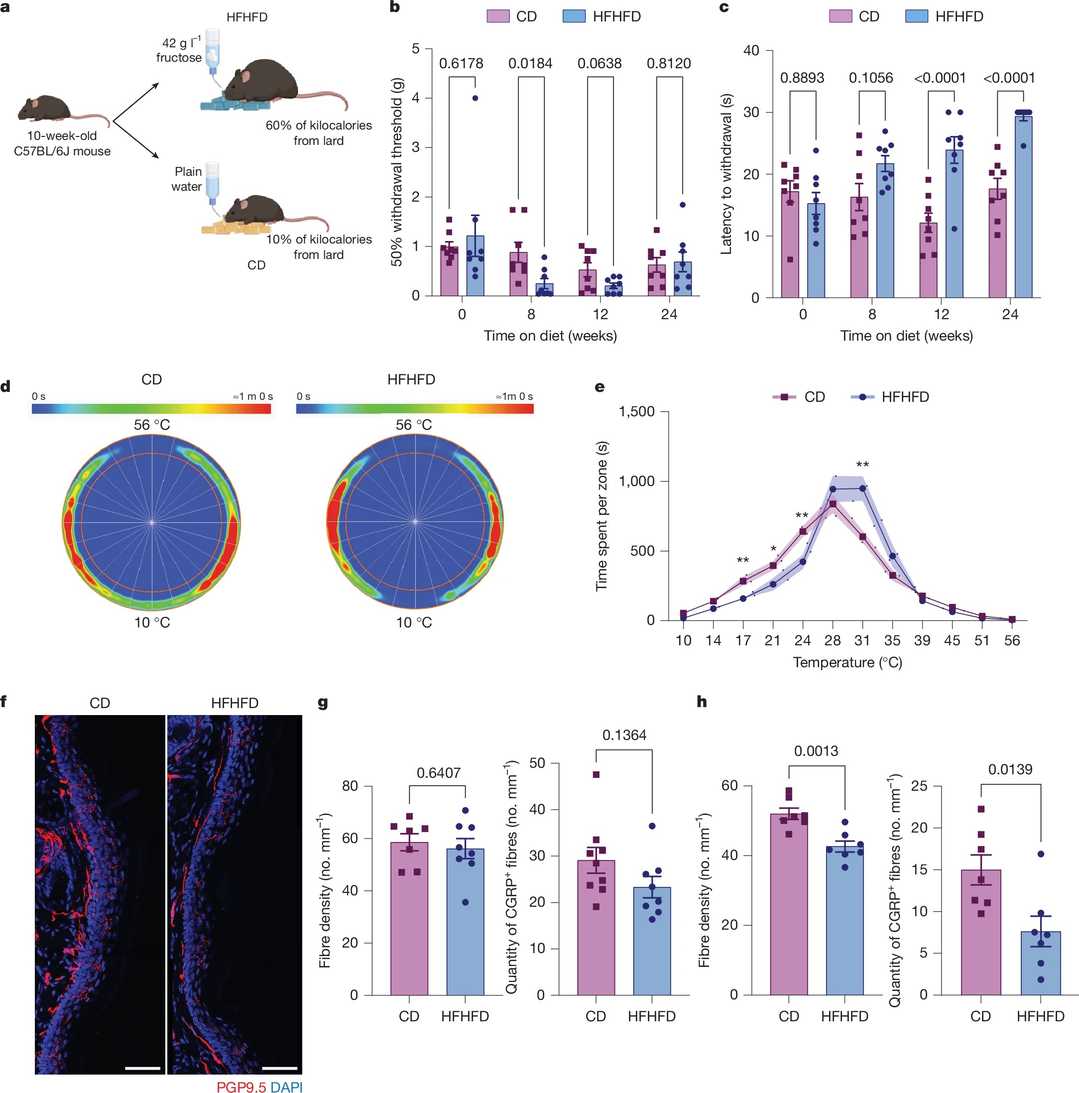The Protective Effect of Macrophages on Nerve Damage is Expected to Help Develop New Therapies for Peripheral Neuropathy
The incidence of metabolic syndrome and type 2 diabetes is increasing, owing to the heightened prevalence of obesity and high-caloric food consumption and many individuals are diagnosed with peripheral neuropathy well before becoming diabetic. Peripheral neuropathy is a common complication of type 2 diabetes, which is strongly associated with obesity, causing sensory loss and, in some patients, neuropathic pain. About half of people with type 2 diabetes are affected by this condition, and about half of these people experience severe neuropathic pain. The damage begins when the axons of sensory neurons begin to shrink and disappear from the tissues they innervate.
Recently, researchers from Harvard Medical School and other institutions found that immune cells will flow into peripheral nerve tissues a few months before damage occurs, apparently to protect these tissues. This surprising discovery is expected to help develop new strategies to prevent peripheral neuropathy, or at least minimize or slow its progression.
 Fig. 1 HFHFD leads to peripheral neuropathy (Hakim, Sara, et al. 2025).
Fig. 1 HFHFD leads to peripheral neuropathy (Hakim, Sara, et al. 2025).
"In the lab, we developed a mouse model of diabetes induced by a high-fat, high-fructose diet," said researcher Sara Hakim. "Studying this model, we found that these mice showed the main features of diabetes within 8 to 12 weeks of starting this diet. About six months later, axons in the skin of the mice began to degenerate, indicating that neuropathy had occurred in the tissue." Diabetic neuropathy can take years or even decades to develop in humans, but using this model, where symptoms develop slowly over a period of months, the researchers were able to capture the progression of the disease and observe early protective responses.
The researchers speculated that peripheral neuropathy might be related to the immune system, so they used single-cell sequencing technology to detect changes in immune cells within the axons of peripheral sensory neurons in nerve tissue. Proinflammatory macrophages, a type of immune cell that resides in nerve tissue, began to produce chemokines, signaling molecules that recruited a second population of circulating macrophages. These macrophages infiltrated nerve tissue about 12 weeks after the mice began eating a high-fat, high-sugar diet, at which time the mice's sensory symptoms began to appear, but no signs of neurodegeneration were observed.
Previously, macrophages were thought to play a pathogenic role in diabetes, responding primarily to the loss of axons. However, the researchers observed the opposite. Surprisingly, when they blocked the infiltration of macrophages into nerve tissue, the mice's neuropathy worsened, not improved. These macrophages actually have a protective effect, slowing the onset of neuropathy and reducing its effects.
Currently, the Woolf lab is exploring how these infiltrating macrophages protect the body from peripheral neuropathy. Next, they will look for ways to induce and maintain this protection and identify which diabetic patients are at risk. One potential protective strategy is to accelerate the recruitment of macrophages to neural tissue, and another is to mimic their protective function, such as through the compounds they secrete (galectin 3).
Woolf explained: "Because we can now analyze cell function and identify the genes they express, we have discovered many new signaling molecules with protective effects,” Woolf explained. "We can go through these lists and see which genes are active." The latest research shows that pain is not just a problem of neurons, but the result of a complex interaction between the nervous system and the immune system. In research over the past year, the Woolf lab has revealed thousands of different molecular interactions between pain-sensing neurons and different types of immune cells.
Now, as examples of immune cells that can protect the body from painful nerve damage emerge, researchers are delving into revealing a new immune system protective mechanism. This discovery offers new hope for future treatments, not only for peripheral neuropathy caused by diabetes, but also for other types of nerve damage.
Reference
- Hakim, Sara, et al. "Macrophages protect against sensory axon loss in peripheral neuropathy." Nature (2025): 1-9.

Your email address will not be published. Required fields are marked *